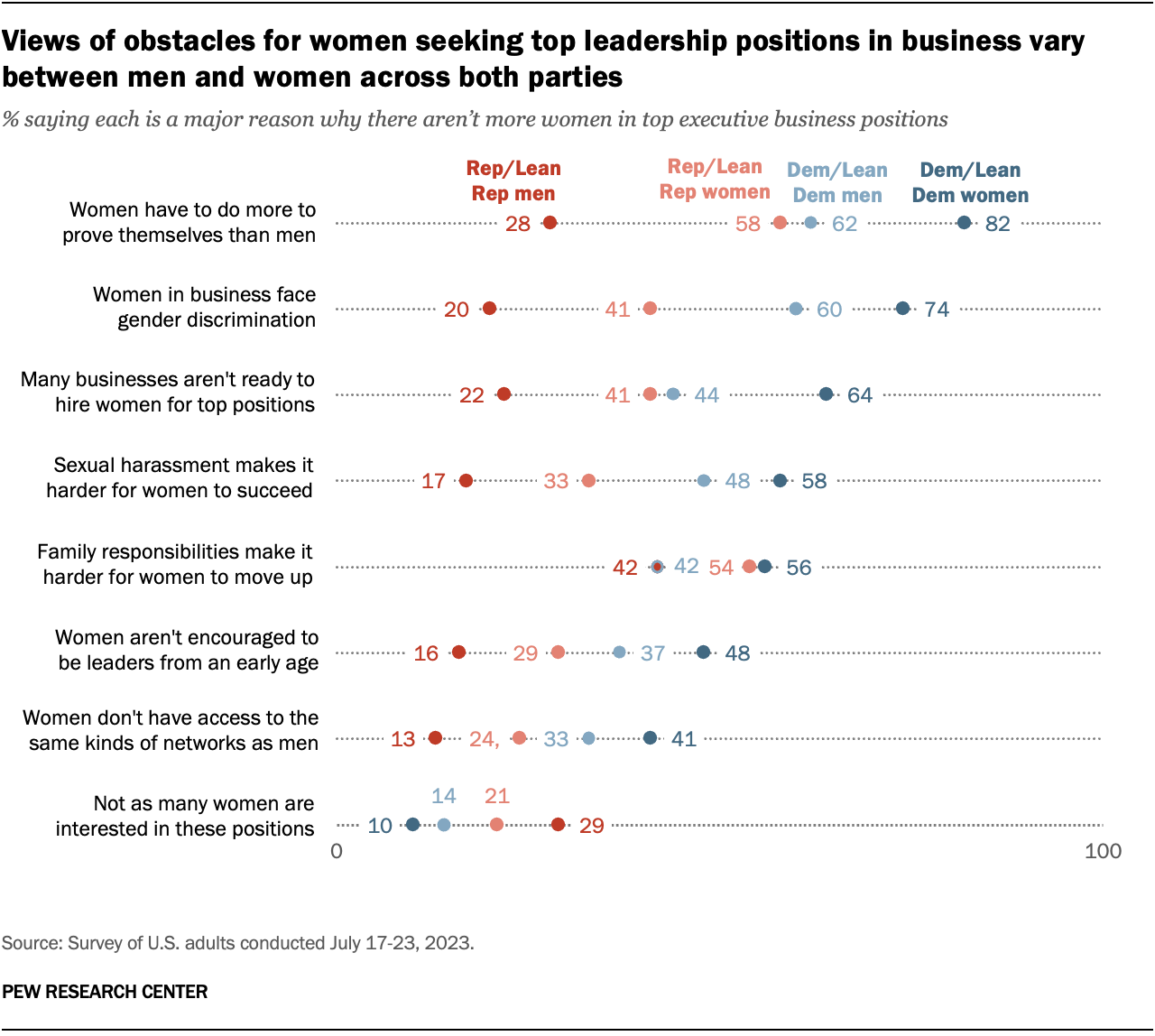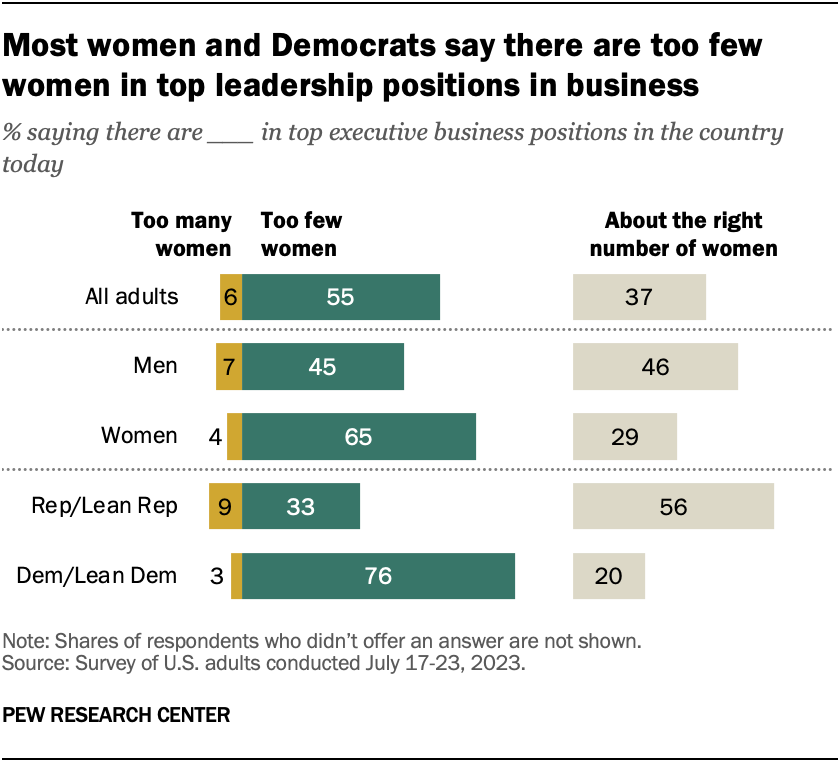 too few women in top leadership positions in business." width="420" />
too few women in top leadership positions in business." width="420" />Women now account for record shares of Fortune 500 chief executives and board members in the United States – 10.6% and 30.4%, respectively. Still, the share of women in top business leadership positions remains well below their share of the population.
How we did thisPew Research Center conducted this study to explore Americans’ views about the current state of gender and business leadership.
This analysis is based on a survey of 5,057 U.S. adults conducted July 17-23, 2023. Everyone who took part is a member of the Center’s American Trends Panel (ATP), an online survey panel that is recruited through national, random sampling of residential addresses. Address-based sampling ensures that nearly all U.S. adults have a chance of selection. The survey is weighted to be representative of the U.S. adult population by gender, race, ethnicity, partisan affiliation, education and other categories. Read more about the ATP’s methodology.
 too few women in top leadership positions in business." width="420" />
too few women in top leadership positions in business." width="420" />
A majority of Americans (55%) say there are too few women in top executive business positions, according to a new Pew Research Center survey. This is down somewhat from 59% who said this in 2018.
Among those who say there are too few women in top business positions, most (79%) say it would be ideal to have the same number of women and men in these roles. One-in-ten say having more women than men would be ideal. The same share (10%) say it would be ideal to have more women in these positions than there are now, but still not as many women as men.
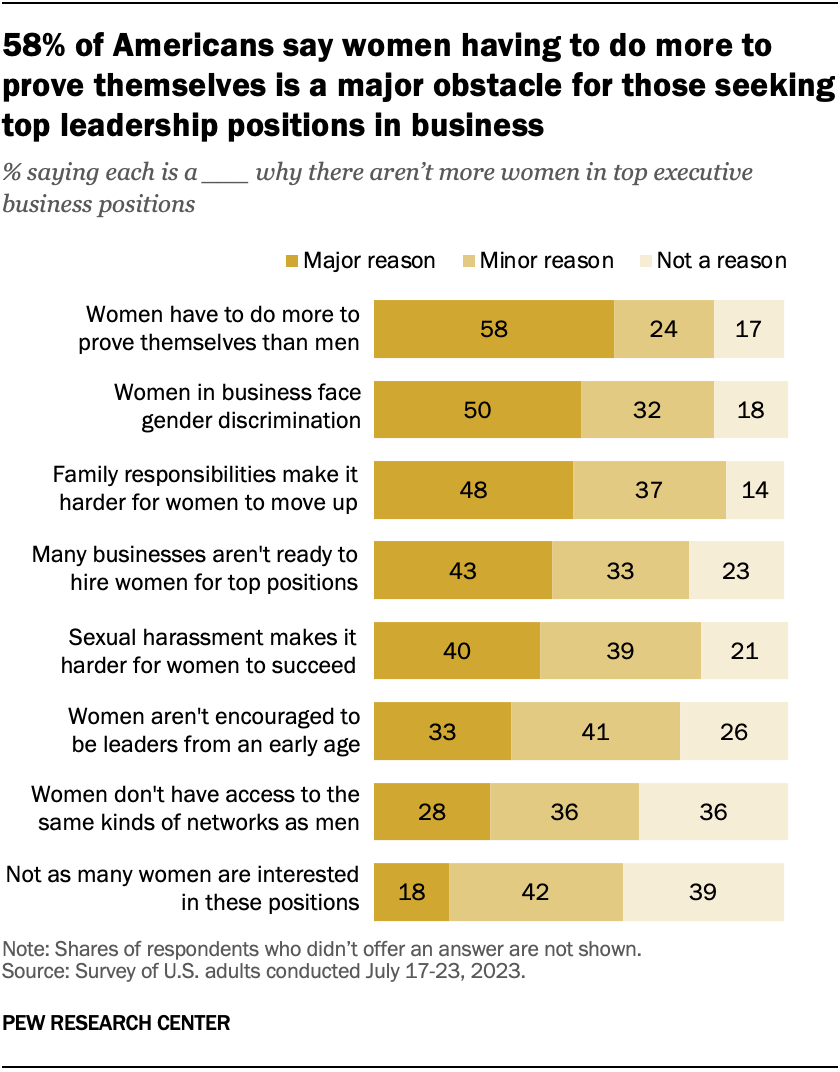
Americans see many factors as major reasons why there aren’t more women in top executive business positions, such as:
Americans are divided on this question. Half say that, even as more women move into management roles, men will continue to hold more of these top positions. A similar share (48%) say that as more women move into management roles, it’s only a matter of time before there are as many women as men in top executive positions in business.
On nearly every question we asked, women and men express different views about the current state of gender and business leadership:
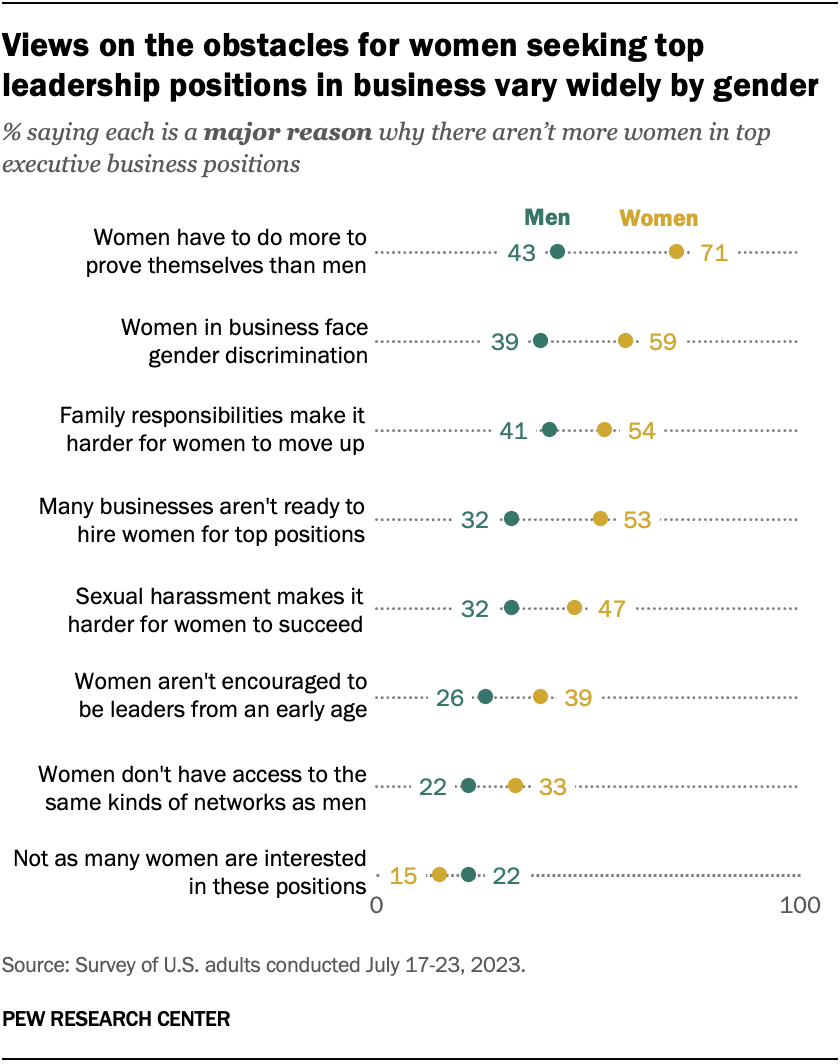
There are also differences in the views of Democrats and Democratic leaners when compared with Republicans and those who lean to the GOP. Among these differences:
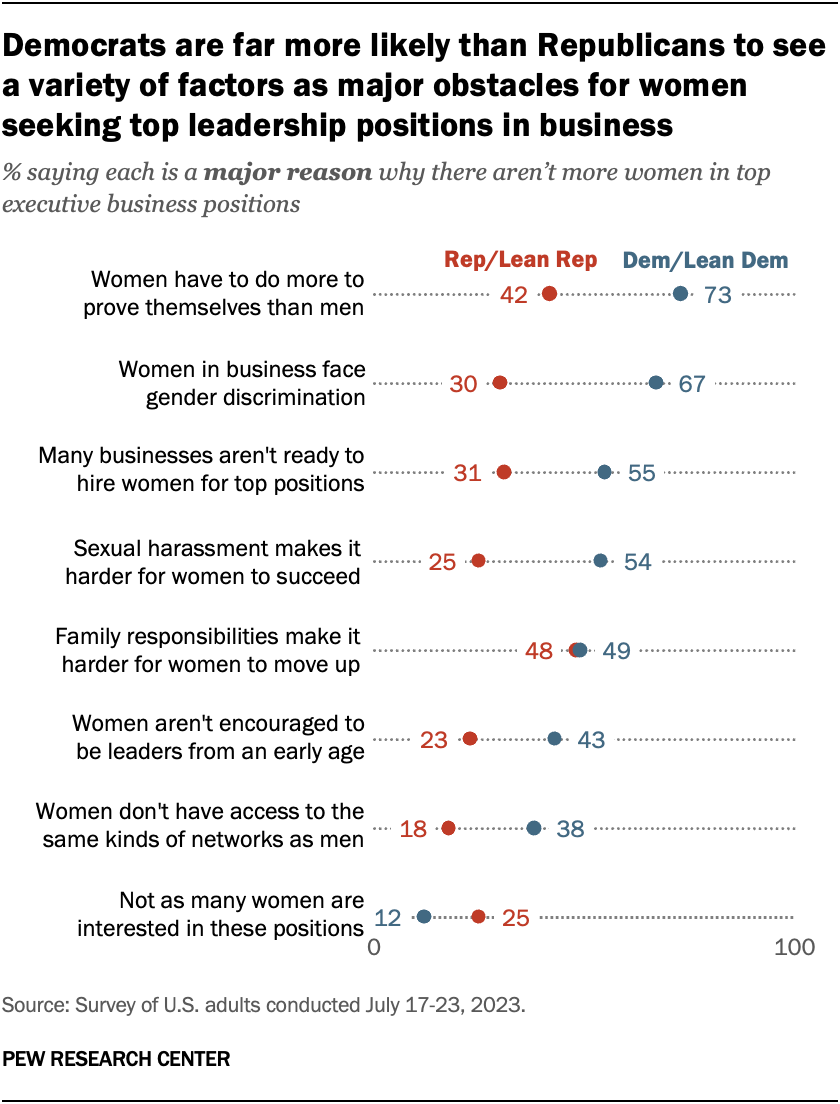
On many questions, there are differences by gender within each party. Republican and Democratic women are more likely than their male counterparts to say there are too few women in top business leadership positions and to point to certain factors as major obstacles for women.
